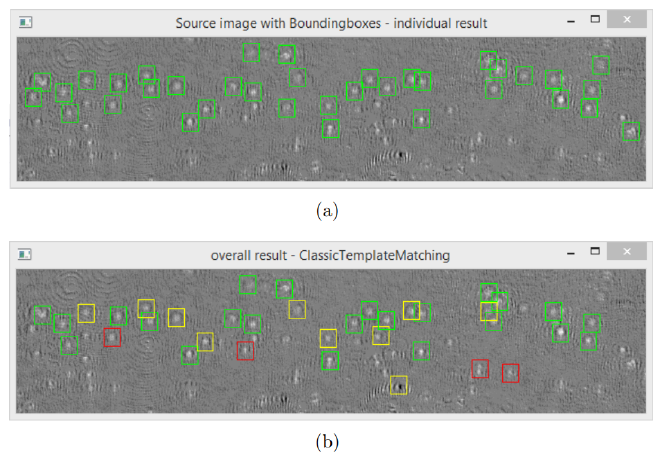Template-Based Detection of Viral Structures in PAMONO Data

As part of my bachelor thesis entitled “Template-based detection of viral structures in PAMONO data ”, an approach was developed that builds on an existing project for the detection of nanoscale particles. The aim of the work was to detect viral particles using various template-based methods in the image data of the PAMONO sensor.
Objectives and challenges #
The PAMONO sensor data consists of grayscale images in which viral structures become visible through different light reflections. The main goal was to develop templates that can reliably detect viral particles. A Mexican hat function was modeled to create a suitable template that reflects the geometric and optical properties of the viral structures.
In addition, the temporal behavior of the viral structures in image sequences was considered. It was observed that viral structures appear and persist in the image data, while noise disappears over time. This characteristic enabled an improved temporal classification of the recognized structures.
Methods used #
Various template-based approaches were evaluated for the detection of viral structures:
-
Classical method:
A simple template was superimposed on the image data to detect viral particles using correlation. -
Cumulative method:
Multiple consecutive image sequences were combined to better detect static structures and reduce noise. -
Gabor transformation:
A Gabor transform was used to better extract frequency information in the image data, highlighting textures and edges in the images for more accurate particle detection.
Classification of the particles #
The viral structures were classified in two steps:
-
Threshold classification:
Based on the correlation between the template and the detected particle, a threshold was defined to indicate the reliability of detection. -
Temporal classification:
Checked whether the detected structure persists across multiple image sequences to ensure that it is indeed a viral particle and not temporary noise.
Development and implementation #
The entire implementation of the work was carried out in C++, using the OpenCV library as the basis for the computer vision algorithms. OpenCV enabled efficient processing of the image data and the implementation of the various template matching methods.
Evaluation #
The results were evaluated using reference data containing the actual positions of the viral particles in the image data. The correlation between the recognized structures and the reference data confirmed the effectiveness of the chosen approach, especially in combination with the temporal classification.
Conclusion #
The bachelor thesis showed that template-based methods, especially in combination with the temporal approach, are an effective method for the detection of viral structures in the PAMONO data. By combining classical and advanced methods such as the Gabor transformation, a high detection rate could be achieved. The implementation in C++ and the use of OpenCV enabled a high-performance evaluation of the sensor data.
Activities #
- Development of image processing algorithms
- Development of detection options
- Development of classification algorithms
- Development of the software using C++ and OpenCV
- Evaluation of the results
- Documentation and presentation of the results